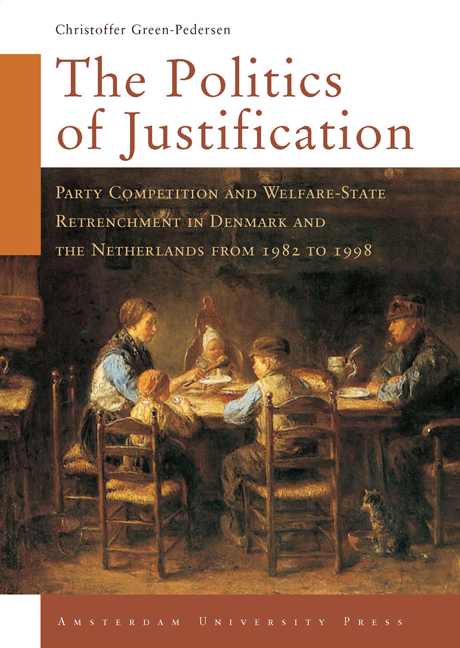 The Politics of Justification
The Politics of Justification Published online by Cambridge University Press: 15 January 2021
Following Pierson's seminal work (1994; 1996), it has become conventional wisdom within the literature on welfare-state retrenchment that retrenchment politics are fundamentally different from expansion politics. This indicates that the scholarly debate about welfare-state retrenchment would be markedly different from the debate about welfare-state expansion, which in several respects is also the case (Green-Pedersen & Haverland 2002). Nevertheless, as will become clear below, the retrenchment debate has not started from scratch. It has been influenced by the preceding and ongoing debate about the growth of the welfare state. Therefore, it is necessary to start with a short introduction to the voluminous literature on welfare-state expansion.
Theories of welfare-state expansion
In the following, a brief sketch of the main positions with regard to the growth of the welfare state will be given.1 This should provide the reader with the necessary background for understanding the retrenchment debate. In general terms, theoretical arguments about the expansion of the welfare state fall into three groups; namely structural or functional theories, theories emphasising the role of politics, especially party politics, and state-centered or institutional theories.
Structural theories all link the emergence of the welfare state to structural changes in society such as modernisation, democratisation, economic growth, or changes in labour market structures (Wilensky 1975; Flora & Alber 1984; Iversen & Cusack 2000, cf. also Pierson 1991: chap. 1 & 2). These societal changes have lead to the emergence of the welfare state. The main aim of these theories has been to explain why all Western countries developed some kind of welfare state. Less attention has been paid to comparative differences. Still, some ‘structural studies’ have focussed on variation among welfare states. By way of example, Cameron (1978) and Katzenstein (1985) emphasize the degree of openness of the economy as a factor leading to different welfare-state developments. Nevertheless, the main impact of the ‘structural theories’ has been to highlight the existence of certain prerequisites for welfare-state development such as democratisation, modernisation etc.
The second group of theories all emphasize the role of politics, especially party politics, in the expansion of the welfare state. With the structural theories, these theories share the ambition of explaining the growth of the welfare state in general.
To save this book to your Kindle, first ensure [email protected] is added to your Approved Personal Document E-mail List under your Personal Document Settings on the Manage Your Content and Devices page of your Amazon account. Then enter the ‘name’ part of your Kindle email address below. Find out more about saving to your Kindle.
Note you can select to save to either the @free.kindle.com or @kindle.com variations. ‘@free.kindle.com’ emails are free but can only be saved to your device when it is connected to wi-fi. ‘@kindle.com’ emails can be delivered even when you are not connected to wi-fi, but note that service fees apply.
Find out more about the Kindle Personal Document Service.
To save content items to your account, please confirm that you agree to abide by our usage policies. If this is the first time you use this feature, you will be asked to authorise Cambridge Core to connect with your account. Find out more about saving content to Dropbox.
To save content items to your account, please confirm that you agree to abide by our usage policies. If this is the first time you use this feature, you will be asked to authorise Cambridge Core to connect with your account. Find out more about saving content to Google Drive.